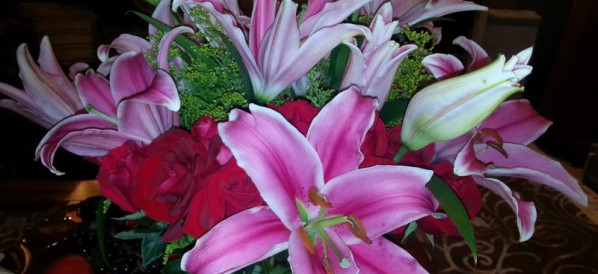 4 Terms
4 TermsHome > Terms > Serbian (SR) > комплементарне боје
комплементарне боје
Complementary colours are colours which complete each other - hence the name. The effect of this completing is to enhance the colours—they look stronger when placed together. This is because they contrast with each other more than with any other colours, and we can only see colour by contrast with other colours. The more contrast the more colour. If you stay in a room entirely painted one colour, after about ten minutes it will fade to grey. The complementary colours are the three primary colours, red, blue and yellow, and their secondaries. Secondary colours are the colours obtained by mixing the primaries in all their combinations of pairs. So the three secondary colours are green, orange and violet. The complementary pairs are red-green, blue-orange and yellow-violet. Artists began to become particularly aware of the significance of complementary colours after the development of scientific colour theory in the nineteenth century. This theory played an important part in the development of Impressionism and Post-Impressionism as well as Fauvism and much modern painting thereafter. The Impressionists were the first to note that shadows are not neutral but are the complementary colour of the light that throws them. So yellow sunlight throws a violet shadow. This can be seen very well in Monet's Woman Seated on a Bench in the crease of her arm and the pool of shadow at her feet.
- Loại từ: noun
- Từ đồng nghĩa:
- Blossary:
- Ngành nghề/Lĩnh vực: Art history
- Category: General art history
- Company: Tate
- Sản phẩm:
- Viết tắt-Từ viết tắt:
Ngôn ngữ khác:
Bạn muốn nói gì?
Terms in the News
Featured Terms
Người đóng góp
Featured blossaries
Browers Terms By Category
- Hand tools(59)
- Garden tools(45)
- General tools(10)
- Construction tools(2)
- Paint brush(1)
Tools(117) Terms
- Natural gas(4949)
- Coal(2541)
- Petrol(2335)
- Energy efficiency(1411)
- Nuclear energy(565)
- Energy trade(526)
Energy(14403) Terms
- Hair salons(194)
- Laundry facilities(15)
- Vetinary care(12)
- Death care products(3)
- Gyms(1)
- Portrait photography(1)
Consumer services(226) Terms
- Gardening(1753)
- Outdoor decorations(23)
- Patio & lawn(6)
- Gardening devices(6)
- BBQ(1)
- Gardening supplies(1)
Garden(1790) Terms
- Digital Signal Processors (DSP)(1099)
- Test equipment(1007)
- Semiconductor quality(321)
- Silicon wafer(101)
- Components, parts & accessories(10)
- Process equipment(6)




